Tips for Success and Happiness with Your Braces
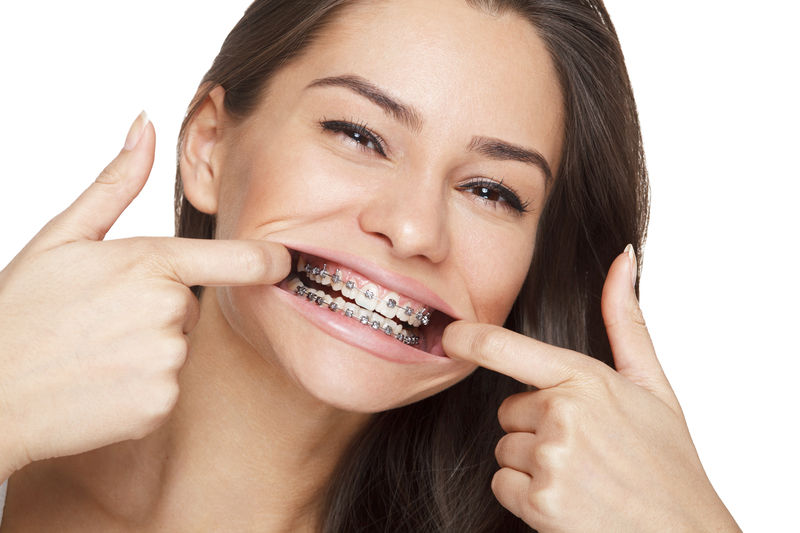
Many adults and teens feel like they will look childish with braces on. However, that still doesn’t stop more than 4 million people wearing braces each year in the U.S. Yes, braces are harder to clean and require more care. However, that care only takes a few extra minutes each day, and you have orthodontic options that can make you extremely happy with your braces. Find out how you benefit from orthodontics!
Your First Week with Braces
When you first get brackets and wires on your teeth, you will have tooth sensitivity for a few days. That sensitivity and soreness will wear off, but during that time, stick to soft foods such as pasta, yogurt, mashed potatoes, etc. Over-the-counter painkillers (like acetaminophen) can help curb pain that first week and at each braces adjustment.
Your braces will feel bulky in your mouth at first, but will quickly start to feel normal. Even though there are changes with braces, you can be successful with your treatment if you do everything the orthodontist tells you. This includes using your bands like they tell you, having good oral health and avoiding foods that can cause you trouble.
There are foods you want to avoid that will either break your brackets or wires or that will become stuck in them. Many foods on this list are also full of sugar, which is what makes plaque that coats your teeth. When plaque sits on the teeth, it decays them and erodes them. Avoid foods like:
- Hard candies
- Chewing on ice
- Apples, carrots, and hard fruits and veggies
- Popcorn (because of kernels), nuts and chunky peanut butter
- Chips and hard snacks
- Caramels, licorice, taffy, Tootsie Rolls, Starbursts, Sugar Daddies, Skittles and similar candies
- Corn on the cob
- Dried fruit, fruit snacks and gummies (which get stuck in brackets and teeth)
- Gum

Taking Care of Your Teeth
Caring for your teeth through proper oral hygiene is essential if you want to love your braces and if you want your teeth to be in good shape when they come off. Patients who skip brushing and flossing will end up with tooth decay, tooth erosion (worn away areas of the teeth) and stains on their teeth when the braces come off. Don’t let that be you! Follow these tips for taking care of your braces successfully:
- Brush, brush, brush! Aim for three times a day instead of just the recommended two times. The American Dental Association recommends that patients brush for at least 2 minutes every time, at least morning and night. Choose a soft-bristled toothbrush that will be more gentle on your teeth and switch out your brush every 3 months.
- Floss your teeth. Flossing is the thing that is most often skipped, especially by children and teens. However, flossing gets about 40% of your tooth surfaces that brushing misses. It is one of the only ways to dislodge stuck food that will decay your teeth. Floss 1-2 times a day. However, invest in flossers or threadable floss, which you can pull through the cracks in your teeth, getting under the wires. This makes flossing so much easier.
- Use a Waterpik and brush. Patients often get food stuck in their teeth that flossing and brushing can’t get out. A waterpik is a small device that shoots water. You shoot the water where you want to dislodge the food or particles in brackets or in between the teeth. A braces brush looks like a tiny Christmas tree. It can get all the gunk out of your brackets and wires with ease.
- Don’t chew on non-food items! Pencils, fingernails, and any other hard item can break your braces.
Benefits that Braces Can Give You
Some patients love their braces, while others don’t. If you are the latter, just remember why you are getting braces: you are looking forward to that beautiful, straight smile. You only have braces on for 1-2 years. If you get through that time, you get to have a straight, beautiful smile for life. Studies show that your smile goes a long way as well. It’s one of the first things others notice about you. In studies done about straight teeth vs. crooked teeth, the impressions others got were quite impressive:
- Invisalign (Align Technology) found that people with straight teeth were 45% more likely to be hired for a job.
- They were seen as 58% more likely to be wealthy and successful.
- People perceived people with straight teeth as healthier, happier, and even smarter than others.
- A whopping 73% of people were more likely to trust someone with straight teeth as well!
Whether you love your braces or not, just remember the amazing benefits that come from having a straight smile. It will not only improve your social life, but straighter teeth are easier to clean and less prone to tooth decay and oral health diseases as well.

Being Happy with Your Braces
The best way to be happy about your braces is to choose braces that you love. Some patients prefer metal braces because they are the most economical choice, while others like Invisalign because they are removable. Patients also enjoy clear, ceramic braces that are like traditional braces, but made from white, ceramic material. If you want the sturdiness of metal braces, but want them hidden like Invisalign, you can also choose our lingual braces option.
These are braces hidden behind the teeth. If you are self-conscious about your appearance and want to straighten your smile quickly, this may be the option you want. No matter what you choose, remember that this is your only time with braces! Enjoy going through this journey and even get your braces at the same time as your friends to make it more fun. For tips about adjustments, appointments and any extra tips for your braces, call Belmar Orthodontics today at (303) 225-9016!
Lingual Braces: Straighten Your Teeth Without Anyone Knowing!

Lingual braces can achieve the same effect as traditional orthodontics in a manner that is inconspicuous and undetectable. By discreetly attaching the braces to the back of the teeth instead of the front, Dr. T.C. Hardy can help you achieve straight, healthy and beautiful-looking teeth. Consider the benefits of lingual braces when you are deciding which orthodontic appliance you want!
How Do Lingual Braces Work?
No matter what braces option you are going to get, we always meet with patients to first have an orthodontic consultation. At this consultation, Dr. Hardy will examine your teeth, checking their straightness as well as your bite and alignment. The size of your teeth matter if you request to have lingual braces put on your teeth. Dr. Hardy will examine the backs of your teeth to determine if you are a candidate to receive them and if brackets and wires will comfortably fit on the tongue-side of your mouth.
Once Dr. Hardy has determined that you are an ideal candidate for lingual braces, he will take impressions of your teeth that are then sent to a lab for custom-made brackets and wires. At your next appointment, we will gently bond the metal to the back of your teeth with the attached brackets. We will then run a metal wire through the brackets. The process is quite similar to what is done with patients who choose traditional metal braces on the front of their teeth. However, instead of your cheeks adjusting to the feel of the brackets, your tongue will be the part adjusting to the new appliance. At each appointment, Dr. Hardy will examine your teeth and adjust the wires as needed to straighten your teeth properly.
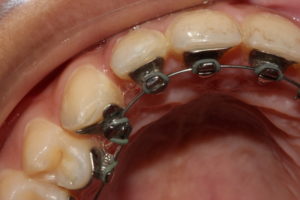
Facts About Lingual Braces
- You can achieve the same results as traditional braces, only with a hidden treatment apparatus on the tongue-side of your teeth.
- These braces have to be custom-made to the back of your teeth, because teeth size can vary from patient to patient.
- Children are not usually candidates for lingual braces. It all depends on their age and the size of their teeth. Baby teeth are small and with many patients, there is not room to fit brackets and wires on the back of the teeth. Children who have larger teeth may be candidates.
- Adults use these braces much more often than teens and children for both reasons of teeth-size and professional/social aspects.
- Patients who play wind instruments will have an easier time playing if they have lingual instead of traditional metal braces.
- A dentist must take continuing education courses and receive additional training in order to provide lingual orthodontic options to patients. This means that not all dentists give patients this option like Dr. Hardy does.
- Brackets placed on the back of the teeth are ones that others will not be able to see. You can go throughout your entire orthodontic process without others knowing that you have braces. However, others will notice your teeth becoming straighter over time.
- Because lingual braces are made of metal brackets and wires (just like traditional braces), they are able to correct bite and alignment issues. Other braces options like Invisalign, are not able to do that.
- You may want to invest in a waterpik for your teeth. Lingual braces have brackets, so food can get stuck in them, which is why you would want a waterpik to get the food out.
- Patients can care for their lingual braces the same as they would traditional metal braces.
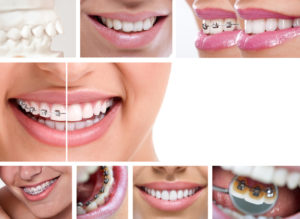
How Do They Compare?
In the past, there weren’t many options when it came to straightening your teeth. Many cultures simply tried cruel methods of pushing and forming the teeth until metal braces were created. Over several decades, metal braces were changed and adapted to how people lived. In modern times, people are ever busy and on-the-go. Aesthetics plays a huge role in how people view themselves and how others view them. This is why hidden orthodontics were created.
Lingual braces are a great way to straighten your teeth in secret. Your other options include:
- Traditional Metal Braces: These are almost the same as lingual braces, except they are made of silver metal alloys instead of gold ones. The brackets and wires go on the front of the teeth, where they are noticeable to others.
- Ceramic Braces: Similar to metal braces, this orthodontic appliance also rests on the front of your teeth. They are made of white, ceramic material, helping them to blend in more with the teeth. However, they are still somewhat noticeable.
- Invisalign Treatment: This orthodontic option involves no brackets and wires bonded to your teeth. You receive a set of transparent aligners custom-made for your teeth each week, that you wear for 20-22 hours of every day. However, although this option makes oral hygiene easier, they cannot help many bite and alignment issues. That is why patients opt for a discreet lingual option that can correct those issues.
Getting Your Lingual Braces
At Belmar Orthodontics, we know that getting braces is a big deal for teens, adults, and even children. Patients worry about their appearance often, which is why options such as Invisalign and lingual braces were invented in the first place. We are excited to be able to offer adults and teenagers an alternative to traditional metal braces with hidden lingual braces! If you want to know more about these braces or want to schedule your consultation, call Belmar Orthodontics today at (303) 225-9016!
Orthodontic Treatment Before the Year 2000
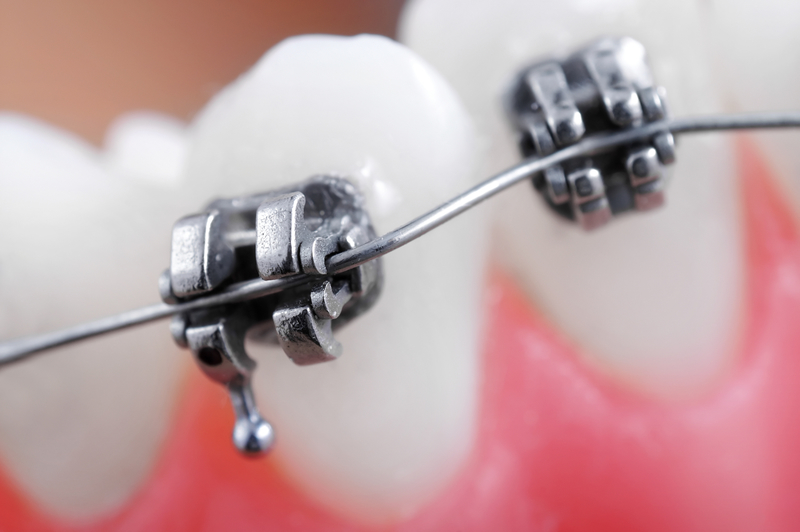
It’s the year 2018 and a lot has changed in every field of medicine since the year 2000. Orthodontics is no exception, and there are always new advances in how your teeth are straightened and cared for. There are many braces options available to patients that were not available in years past. However, some services—such as Invisalign—have been around longer than you might think. Find out when different orthodontic practices and services were available to patients and how orthodontic treatment looked before the year 2000.
How Old Is Orthodontic Treatment?
Many people think that orthodontic treatment is fairly new. However, people have been straightening their teeth for many centuries. Their methods were simply much cruder than the braces and orthodontic appliances you know today. Many mummies from Ancient Egypt have been found wearing orthodontic appliances to straighten their teeth. Ancient Greeks, Romans and the Etruscans have also been found with various types of “braces” and other mouth appliances.
To give you an idea of how long orthodontic treatment has been around, writings by Hippocrates (a Greek physician) have been found about the subject from 400 b.c. Even back then people were concerned about crooked teeth and how they looked. However, there weren’t very good methods for straightening the teeth, so there weren’t many advances in orthodontics until just a few centuries and decades ago.

Past Orthodontic Methods
People centuries ago did not have the best methods for straightening teeth. However, over the centuries, many people made advances or tried various methods such as the following:
- Ancient Egyptians used metal parts and wires to try to straighten the teeth, as has been seen on mummies.
- Celsus, a Roman writer from around 1 A.D., wrote about trying to straighten your teeth by pushing them into place.
- Several years later, a Roman named Pliny recommended filing your teeth down if you wanted them a certain size.
- Pierre Fauchard was born in 1728, and through his various methods and research in straightening teeth, is now considered the “Father of Dentistry”. One of the methods he tried on patients was forcefully pulling and moving the teeth into place with forceps. He would then tie those moved teeth to others so they could heal back into the mouth again.
- Dental impressions began in the 17th century by Matthaeus Gottfried Purmann. Impressions make models of the teeth, and this method was so successful that impressions are still used today.
- In the United States, barbers and medical doctors often pulled infected teeth and performed orthodontic treatment. The treatment varied from person to person and generally involved pulling teeth without numbing medicine.
- J.S. Gunnell invented a form of headgear in 1822 that was successful in straightening the teeth. However, that headgear was large and fastened to the jaw outside the mouth and pushed on the teeth.
- Before 1970, professionals in orthodontics wrapped wires around each tooth, anchoring them with a bracket on each tooth. This method required a lot of metal in the mouth.

Modern Braces and Appliances
Modern orthodontic treatment is very straightforward and easy. Orthodontics has advanced so much that people can even straighten their teeth without any visible signs that they are doing so. When you think of braces, you probably think of the metal brackets and wires that so many wear. Traditional metal braces consist of a metal bracket attached to each tooth with a metal wire going through the bracket. This orthodontic treatment method mimics past metal treatments that were done throughout the centuries. However, the brackets and wires take up minimal space in the mouth and gently straighten the teeth.
Ceramic braces are another modern option for patients that are most similar to metal braces. They involve the same look and design, except they are made from white, ceramic material. Even the archwire can be made white for a patient. Lingual braces also use a metal bracket and wire design, except that they are attached to the back of a patient’s teeth. These were created in 1976 and provided patients with a way to straighten their teeth without visible brackets on their teeth.
Invisalign is the most incognito way to straighten your teeth. Created in 1997, this orthodontic treatment consists of transparent aligners that are switched out each week. A patient will wear the aligners 20-22 hours a day with the freedom to remove them for eating, drinking, sports, playing instruments and more. In about the same time as traditional metal braces (sometimes less), patients can get straight teeth. This is an amazing option, as any teen or adult can straighten their teeth without others knowing.
Orthodontic Treatment Today
Many advances in dentistry happened around 1970 and later. This is when the design of metal braces was perfected to what we know it to be now. The future will surely hold many more advances in orthodontic treatment as the years go by. No matter what type of appliance is available or what you choose to have, we recommend straightening your teeth. Not only can it significantly reduce your risk for tooth decay and gum disease, but straighter teeth can raise your confidence and help you be more successful. To have your free braces consultation, call Belmar Orthodontics today at (303) 225-9016!
5 Advantages of Invisalign Treatment
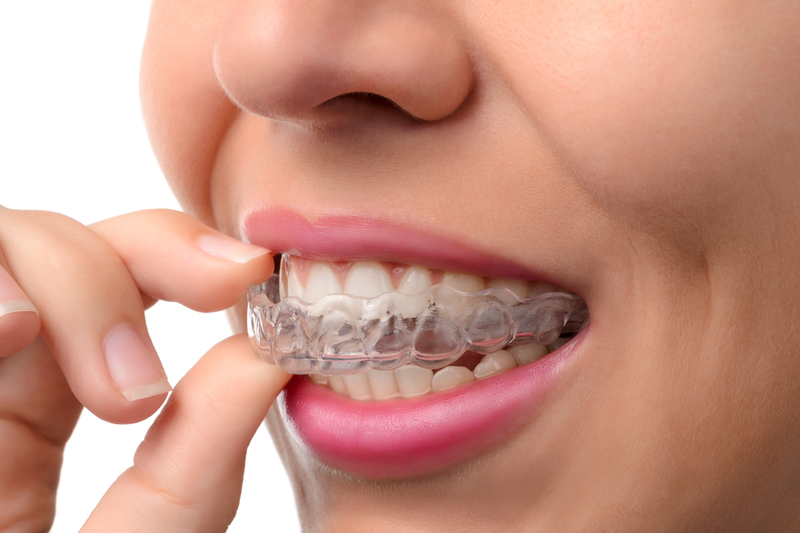
Are you thinking about straightening your teeth? A straighter smile through Invisalign treatment or other orthodontic options will set you on a path to more confidence and success. Lakewood Invisalign treatment not only works to improve your smile, but it also comes with amazing advantages over traditional braces. Not only is invisalign treatment virtually invisible on your teeth, but the aligners are easy to remove and work well with your lifestyle. Read on for more advantages of Invisalign treatment!
Invisalign and Invisalign Teen
You may have heard of Invisalign treatment before. This type of orthodontic treatment has been around for about 20 years, but has continually gained popularity—especially among adults and teenagers. We offer an alternative to traditional metal braces that can discreetly straighten your teeth while improving the functionality of your smile. Invisalign does all this without anyone knowing that you are even straightening your teeth!
Invisalign is a series of transparent aligners that gently move your teeth into a straighter position. You meet with us for an Invisalign consultation and we are able to take digital images of your teeth. With these, we make a model of your mouth and plan out a trajectory of your straightening treatment. Based off of your mouth, we design transparent aligners that will be switched out every 1-2 weeks. You wear these aligners throughout the day and night to move your teeth into that beautiful straight smile you’ve always wanted. They can even correct bite and malocclusion problems.
Advantages of Invisalign
There are many advantages to Invisalign treatment, which is why our patients love this option!
- It’s designed to be virtually unnoticeable on your teeth. The aligners are clear and fit snug to your teeth, meaning no one will know you’re wearing them.
- The aligners can easily be removed during eating, drinking, flossing and brushing. You can’t do that with any other braces option, as all the other options are cemented to your teeth. Being able to remove the aligners makes it so you have freedom with your treatment, especially if you need to remove the appliance to play sports.
- Less office visits are typically needed compared to traditional braces. You only need to come into the office every 4-6 weeks at a time.
- Teeth are easier to clean for optimum oral health during treatment. You simply remove the aligners at night, clean them, and clean your teeth as you normally would. Flossing is quick and easy, as are brushing your teeth. Traditional braces take much longer to clean.
- Total time for optimal results is usually shorter than metal braces treatment. If you need only slight orthodontic correction, you won’t need Invisalign treatment for very long.
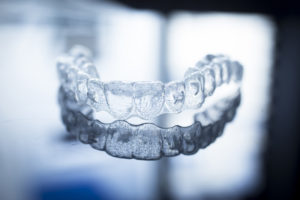
How Do the Other Options Compare?
There are various types of orthodontic options out there besides Invisalign treatment. Traditional metal braces are the most common orthodontic appliances because they are the cheapest option for straightening your teeth. These appliances involve very visible metal brackets attached to the center of each tooth with a metal archwire that passes through the brackets on top and bottom. Lingual braces are also metal braces, but they are attached to the back of your teeth. Clear braces are a very close cousin to metal braces, as they are built the same, but out of ceramic material that is white like your teeth. All options will straighten your teeth very well, but Invisalign is the most invisible option you can have. This is why adults and teens alike love Invisalign treatment so much.
You can use Invisalign treatment for simple straightening cases or complex bite and malocclusion cases. It’s invisible and you can see how your teeth move at every stage of your treatment. You can’t do that as clearly with other types of braces, but must wait until the end of treatment to see your smile. Studies also suggest that teens who do Invisalign treatment (as compared to other orthodontic methods) are 2 times more likely to have a boost in their self esteem. Who wouldn’t want that?
Your Experience with Clear Aligners
We believe that smiles are meant to be shared. However, many people with braces shy away from smiling because of the metal in their mouth. This is common with traditional metal braces, especially with adults. However, a straighter smile can do wonders for your professional and social life. Studies show that a straighter, more beautiful smile can make you more attractive to others. An amazing smile not only boosts your confidence, but can make you more successful because you feel more confident. You’ll smile more, drawing others to you and you will even be happier.
Invisalign has conducted their own research about straighter smiles and what they do for you. After orthodontic treatment, a person with a straighter smile has a leg up on their competition when it comes to landing a job. Employers are more likely to employ someone with a straighter, healthier smile because it makes them appear healthier and successful. People perceive people with straighter teeth as 58% more likely to be wealthy, 45% more successful, 47% more likely to be healthy and 38% smarter. 73% of people are also more likely to trust someone with straight teeth over someone who has crooked teeth.
Your Invisalign Treatment
If you want a straighter smile, don’t wait to get it! With the clear, removable aligners that Invisalign uses, Dr. Hardy can help you gradually move your teeth into their proper position. He can also correct malocclusion (bites that don’t close correctly), without the discomfort and presence of metal braces. When you select Invisalign to correct your smile, no one else has to know! To learn more about this braces option, call Belmar Orthodontics today at (303) 225-9016!
Retaining a Straight Smile for Life

A straight smile is something that millions of people strive for. In fact, more than 4.5 million Americans wear braces each year to achieve that straighter smile. Not only are there aesthetic benefits of a more beautiful smile, but a straighter smile also helps you to avoid oral health issues. For children, we can correct bite and alignment problems that make biting, chewing, speaking, and breathing difficult. For adults, we can correct these issues as well as make the permanent teeth straight. This can be done through traditional metal braces, lingual braces, clear ceramic braces, and Invisalign transparent aligners. Once you have a straight smile though, you must take care of your oral health to keep that smile straight. We can help you to know the benefits of a straighter smile and how you can keep it straight throughout life!
Straightening Your Teeth
In ages past, straightening your teeth was much more difficult than it is today. Instead of only offering traditional metal braces, we give our patients several orthodontic options to get that straight smile they’ve always wanted. Traditional metal braces are still the economical and most popular option amongst patients. This is the tried and true method of achieving a straight smile, and is what most people think of when they picture braces. This design consists of metal brackets attached to the front and center of every tooth, where an archwire will go through each bracket. At each appointment, this wire is adjusted and the teeth get straighter and straighter.
Your Options
We also offer lingual braces, ceramic braces and invisalign treatment:
- Lingual Braces – Think of these braces as metal brackets attached to the inside of your teeth. They are generally more gold in appearance and instead of a bracket attached to each tooth, there is a custom-made metal piece attached to the inside of each tooth. There is a bracket and a wire just like with traditional metal braces, but the entire appliance is on the tongue-side of your teeth. This option is great for teens and adults who want a straight smile without people seeing their appliance.
- Clear Ceramic Braces – Made of ceramic material, these brackets and archwire actually help to decrease demineralization that can happen with braces. Ceramic material is naturally white, so we can blend your brackets (and even the archwire) into the color of your teeth. This is a great option to have the functionality of metal braces without them being very noticeable.
- Invisalign – This is a series of transparent aligners that have become increasingly popular over the last decade. We custom-make transparent aligners that you change out every 1-2 weeks. These aligners slowly move the teeth into a straight smile over time and take about the same amount of time to straighten as metal braces do. Teens and adults alike love Invisalign because you can straighten your teeth invisibly. You also have the freedom to remove the aligners to clean your teeth, eat, drink and play sports.
Retaining a Straight Smile
Over 4 million people wear braces each year. Those patients will typically spend between 18 and 24 months achieving a straight smile. However, all is not done once those braces come off. We provide every patient with a retainer after their braces come off. You need to commit to wearing your retainer to maintain a straight smile throughout life. We custom-make a retainer after taking an impression of your teeth once your braces come off. Wear this retainer around 16 hours each day. That means throughout the night and for part of the day. Remove them when you eat and make sure to clean your retainer thoroughly with warm water and hand soap only.
If you have a removable retainer, make sure to keep it in its secure case so that it is not damaged or warped in any way. If you don’t want to have to worry about wearing your retainer enough or if you lose your retainer easily, you should consider getting a permanent retainer. These types of retainers consist of metal wires that are attached to the inside of the front teeth. They can be attached on both the bottom and top teeth or just the bottom teeth. These types of retainers last for years and can maintain your straight smile for many years to come. Wearing your retainer is highly important for keeping a straight smile. Without it, your teeth can begin shifting within the first month of your braces coming off.
Keep Your Teeth Strong
A major part of keeping your teeth healthy and strong (if not the most important part) is to keep them healthy through proper oral hygiene. Many patients know that they should brush and floss their teeth to keep them healthy. Many patients also think that losing teeth with age is inevitable, but it’s not. There are many people that keep their teeth for their entire life because they take such good care of those pearly whites. The American Dental Association recommends brushing your teeth at least twice a day. This is a minimum recommendation, as brushing your teeth after every meal will reduce your chances for tooth decay and gum disease even more.
A straight, healthy smile can increase your confidence and self esteem. It can also make you appear more confident and successful, and can help you do better in school and land a better job. There are many incredible benefits that stem from a straight smile. We encourage you to invest in orthodontic care and to retain your straight smile after your braces come off. If you want additional tips for keeping your smile healthy and straight, call Belmar Orthodontics today at (303) 225-9016!
Before, After and During Braces
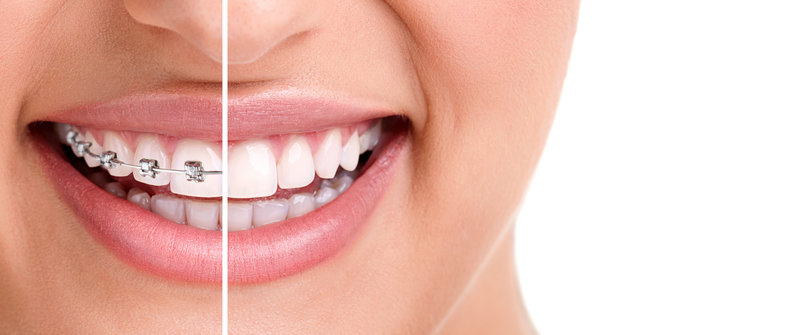
What do you need to know before, after and during braces? How do you prepare for orthodontic care? The American Dental Association says that patients can greatly benefit from both dental and orthodontic care if they want a better smile. Seeing a dentist often as a child can help you prepare for braces in the future. Seeing a dentist and orthodontist early on can also help prevent serious oral health issues. When preparing for braces, you will receive an oral exam, x-rays, and have molds of your teeth made. You may even need dental work done as well. We can help you know what you need to do before braces, during, and after braces to achieve a better smile!
Preparing for Braces
Seeing your dentist is the best way to prepare for braces. The ADA recommends that patients visit their dentist at least biannually (meaning twice a year). Patients who have gum disease or are prone to tooth decay (cavities) may need to visit their dentist more often than that to prevent problems. A dentist can detect abnormal bites or alignment in children. This early detection can help children to see an orthodontist early-on for care before bite and alignment problems become severe. Most patients see an orthodontist around the early adolescent years to straighten the teeth. This is because most alignment problems are apparent after the permanent teeth have come into the mouth.
Studies show that most patients who receive braces are between 8 and 14 years old. You will visit your dentist and then often see an orthodontist after. That orthodontist will do a full exam of your teeth including your jaws and mouth and how your bite and alignment are. X-rays help to determine the position of the teeth in the jaw and help an orthodontist plan how your teeth must move to come into correct alignment during your treatment. Much like a dental office, you will have molds (also called “impressions”) made for your teeth. A plaster model of your teeth will be made that the orthodontist can made a plan from. In preparing for braces, you should plan on between 18-24 months of wearing braces to receive a straight smile. However, know that braces can be fun and are an investment in your future.
Caring for Your Braces
Your braces will be a new experience for you. At first, you may have a tender mouth, as your teeth will have to get used to the new brackets that are on them. Brackets are the squares attached to each tooth. There will be an archwire that runs through each bracket and helps mold your jaw arch correctly. You may also have elastic rubber bands and steel bands in the back of your teeth that are attached to the tooth. You must take extra time each day to care for your braces properly. If you brushed for 2 minutes before braces, you will have to extend that time now. Each bracket can get food stuck in it with any given meal, so it’s important that you brush each tooth and especially brush the bracket at different angles to dislodge food that has become stuck.
Flossing is extra important as well, because it is usually a step that is skipped if patients are short on time. Flossing requires setting aside around 10 minutes of your time to do it right. Use a floss threader to thread the floss under your wire, then floss between your teeth like normal. You will have to thread the floss for each individual tooth, but the time is worth it as it helps to decrease your risk for tooth decay between the teeth. Some patients may need to use a proxy brush or toothpicks to dislodge foods from the brackets. A mouthrinse with fluoride can help keep the teeth healthy as well.
After Your Orthodontic Care
You’ve spent 18-24 months to get a better smile. Now what? It is highly important to wear your retainer every single day after your braces come off. Your teeth have been moved into place very recently and can even start changing back into their crooked paths in the first month after braces if the retainer is not worn. Wear your retainer according to what the orthodontist suggests. If you follow their recommendations for taking care of your smile, you can look forward to many decades of a better smile with beautiful teeth.
A smile is not complete once it is straight. You still must brush and floss the teeth every single day to prevent tooth decay and gum disease, both of which can destroy your smile. However, both of these are avoidable if you follow basic oral hygiene.
A Better Smile Today
If you care for your braces well, then you can expect to have a beautiful smile after your treatment is over. A better smile can bring you added confidence and success, which is what we want for every patient. If you are preparing for braces, follow our recommendations. You can even learn more about preparation, what to do with braces in special circumstances, and ask questions you may have after your care is over. Simply call our Belmar Orthodontics office at (303) 225-9016 to know more!

